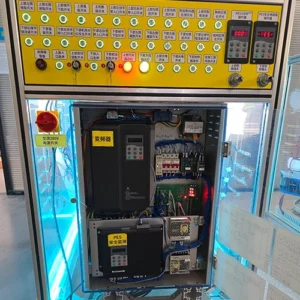Tabla de contenido
PalancaElevator Safety Components
When we think of buildings, many of us picture towering skyscrapers, sleek offices, and bustling shopping malls. Yet, all these structures share a common lifeline—elevators. These mechanical marvels whisk us between floors, facilitating daily life, improving accessibility, and even saving time. However, the real heroes behind the scenes are the componentes de seguridad del ascensor that ensure secure and reliable transportation. Let’s explore how these vital elements work together to keep us safe and confident on our journeys upward and downward.
Elevators are not just boxes that move up and down; they are complex systems designed to operate smoothly and efficiently. The first line of defense in elevator safety components is the **safety brake**. Imagine you’re in a high-rise building, and suddenly the elevator encounters a malfunction. The safety brake would activate, instantly stopping the cabin from falling. For instance, in the case of an emergency stop, this mechanism ensures that the elevator halts securely, preventing any potential accidents. This feature symbolizes how well-intentioned technology can save lives.
Another essential component is the **door sensor**. Picture a busy office building where employees are rushing to catch their rides. Without these sensors, people could be seriously injured if the doors were to close on them. Modern door sensors detect obstructions and automatically reverse the door’s direction, ensuring a safe entry and exit. This advancement is particularly important in areas where large crowds gather, such as shopping centers and hospitals. The efficiency of door sensors not only enhances safety but also improves user experience, proving that elevator safety components are crucial in various settings.
The **weight sensor** is yet another indispensable element. It prevents elevators from exceeding their load capacity, which could lead to system failures or accidents. For example, in a scenario where too many passengers enter an elevator, the weight sensor will trigger an alert and prevent the elevator from moving. This ensures that each journey is safe and secure, maintaining the integrity of the elevator system. Particularly in environments like hotels and corporate buildings, managing passenger flow and weight is essential, making these safety components invaluable.
Furthermore, we cannot overlook the role of **communication systems** in elevators. In the event of a malfunction, having a working intercom or emergency button connects passengers with assistance promptly. For example, in an elevator that is stuck between floors, a working communication system allows passengers to remain calm, as they can promptly alert building management or emergency services. This aspect emphasizes the human side of technology—elevators are not just machines; they are vessels transporting people, and their safety features should reflect that.
Beyond these core components, elevator maintenance plays a significant role in ensuring that all safety measures function correctly. Regular inspections ensure that each component, from the pulleys to the control systems, operates seamlessly. Going back to our skyscraper example, a routine check can identify potential problems before they escalate, thereby enhancing overall safety. Implementing stringent maintenance protocols is crucial in high-traffic buildings such as hospitals, where elevator malfunctions can disrupt operations and affect patient care.
The advantages of incorporating high-quality elevator safety components are clear. They not only mitigate risks but also contribute to a sense of security among users. Buildings that prioritize safety are more likely to attract tenants and customers, enhancing their reputation and resulting in lower insurance costs.
In conclusion, the elevator safety components that ensure secure and reliable transportation are vital aspects of modern architecture. They incorporate a wealth of technology designed to protect users while improving their experience. From safety brakes to door sensors and communication systems, each component serves a specific purpose that collectively upholds safety standards. As technology continues to advance, we can only expect these systems to evolve further, providing even greater safety assurances for elevator passengers. Ultimately, knowing that these safety features are at play can help us feel more secure every time we step into an elevator. Understanding and appreciating the importance of elevator safety components not only enlightens us but can also spur conversations about building design, maintenance, and technology in our everyday lives.


